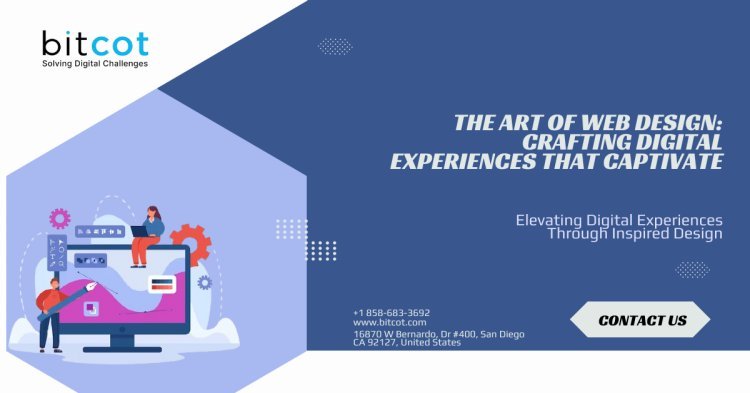The Art of Web Design: Crafting Digital Experiences That Captivate
"The Art of Web Design: Crafting Digital Experiences That Captivate" delves into the intricate world of web design, exploring how designers can create captivating digital experiences. It highlights the importance of design principles, user experience, and creativity in crafting websites that engage and inspire users. Through thoughtful design choices and attention to detail, designers can create websites that leave a lasting impression and resonate with audiences.

In today's digital age, where the internet serves as a gateway to virtually every aspect of our lives, the art of web design has emerged as a crucial discipline. A well-designed website is more than just a collection of web pages – it's a digital experience that has the power to captivate and engage users. In this blog post, we'll explore the art of web design and discuss how designers can create digital experiences that leave a lasting impression.
At its core, web design is about more than just aesthetics – it's about creating an experience that resonates with users on a deeper level. This requires a deep understanding of design principles, user behavior, and the goals of the website. By combining creativity with strategy, designers can craft websites that not only look great but also achieve their intended objectives.
One of the fundamental principles of web design is visual hierarchy. This refers to the arrangement of elements on a web page in a way that guides the user's attention and communicates the relative importance of each element. By using techniques such as size, color, contrast, and spacing, designers can create a visual hierarchy that helps users navigate the website and find the information they're looking for more easily.
In addition to visual hierarchy, typography plays a crucial role in web design. The choice of fonts, font sizes, and font styles can greatly impact the readability and overall aesthetic of a website. By selecting fonts that are legible and appropriate for the brand, designers can enhance the user experience and convey the desired tone and personality of the website.
Another key aspect of web design is usability. A website may look beautiful, but if it's difficult to navigate or confusing to use, users will quickly become frustrated and abandon it. That's why usability testing is an essential part of the web design process. By observing how real users interact with the website and gathering feedback, designers can identify usability issues and make improvements to ensure a seamless and intuitive user experience.
In addition to aesthetics and usability, effective web design also takes into account the needs and preferences of the target audience. This requires designers to conduct thorough research and gain a deep understanding of the users they're designing for. By understanding their goals, motivations, and pain points, designers can create websites that resonate with users and provide value to them.
One of the most exciting aspects of web design is the opportunity for creativity and innovation. With advances in technology and design tools, designers have more freedom than ever to push the boundaries of what's possible and create truly immersive and engaging digital experiences. Whether it's through interactive animations, innovative navigation patterns, or bold visual styles, designers can captivate users and leave a lasting impression.
Conclusion:
The art of web design is a multifaceted discipline that requires creativity, strategy, and empathy. By combining design principles with user insights and the latest technologies, designers can create digital experiences that captivate and engage users. Whether it's through visual hierarchy, typography, usability, or creativity, effective web design has the power to leave a lasting impression and elevate the online presence of any brand or organization.
Also Read: Top 15 Best E-Commerce Websites in the World
What's Your Reaction?










![Wireless Connectivity Software Market Size, Share | Statistics [2032]](https://handyclassified.com/uploads/images/202404/image_100x75_661f3be896033.jpg)



